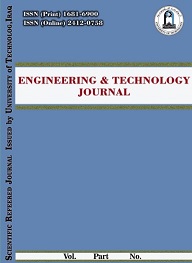Abstract
One of the limitations of the usage of the finite element method in dynamic soilstructure
interaction arises when it is used for the modelling of an infinite domain if
nothing is done to prevent from artificial reflections at the mesh boundary; errors are
introduced into the results. To handle reflections, different artificial boundaries have
been proposed. The aim of such boundaries is to make them behave as nearly as
possible as if the mesh extends to infinity. In this paper they are known as transmitting,
absorbing or silent boundaries. A brief description to two different approaches of
absorbing boundaries is made, first by using infinite elements and the second by using
viscous boundaries method. For this purpose the computer program named
“MIXDYN” is modified in this study to “Mod-MIXDYN” by adding mapped infinite
element model to the finite elements models of the program to be used for dynamic
analysis of soil-structure interaction problems. A new derivation of the mapped
functions is made in this study for the cases when the infinite direction is extended to
the left horizontally (at negative ξ direction) and down vertically (at negative η
direction).
Two verification problems are solved to compare the results of the modified
program with the results of other software, namely ANSYS and OpenSees representing
other types of elements (dashpot elements) modelling boundaries as viscous boundary.
It was found that the transmitting boundary absorbs most of the incident
energy. The distinct reflections observed in the "fixed boundaries" case disappear in
the "transmitted boundaries" case. This is true for both cases of using viscous
boundaries or mapped infinite elements. The viscous boundaries are more effective in
absorbing the waves resulting from dynamic loads than mapped infinite elements. This
is clear when comparing the results of both types with those of transient infinite
elements
interaction arises when it is used for the modelling of an infinite domain if
nothing is done to prevent from artificial reflections at the mesh boundary; errors are
introduced into the results. To handle reflections, different artificial boundaries have
been proposed. The aim of such boundaries is to make them behave as nearly as
possible as if the mesh extends to infinity. In this paper they are known as transmitting,
absorbing or silent boundaries. A brief description to two different approaches of
absorbing boundaries is made, first by using infinite elements and the second by using
viscous boundaries method. For this purpose the computer program named
“MIXDYN” is modified in this study to “Mod-MIXDYN” by adding mapped infinite
element model to the finite elements models of the program to be used for dynamic
analysis of soil-structure interaction problems. A new derivation of the mapped
functions is made in this study for the cases when the infinite direction is extended to
the left horizontally (at negative ξ direction) and down vertically (at negative η
direction).
Two verification problems are solved to compare the results of the modified
program with the results of other software, namely ANSYS and OpenSees representing
other types of elements (dashpot elements) modelling boundaries as viscous boundary.
It was found that the transmitting boundary absorbs most of the incident
energy. The distinct reflections observed in the "fixed boundaries" case disappear in
the "transmitted boundaries" case. This is true for both cases of using viscous
boundaries or mapped infinite elements. The viscous boundaries are more effective in
absorbing the waves resulting from dynamic loads than mapped infinite elements. This
is clear when comparing the results of both types with those of transient infinite
elements
